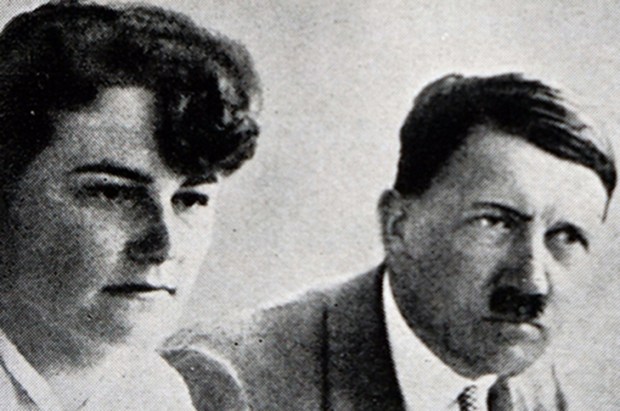How can you defend a man you hate? John Fairfax, in his Blind Defence (Little Brown, £16.99), explores this dilemma. Diane Heybridge is found dead in her London flat. She was poor, working-class, without much of a future to look forward to. But did she take her own life, or was she murdered by her callous, jilted partner, Brent Stainsby? Into the fray steps William Benson, an ex-con, a murderer himself, now turned maverick barrister, a person the press and the public love to hate. With his legal partner Tess de Vere, he takes on Stainsby’s case and finds himself defending a man that nobody likes, and that Benson himself despises.
As the true and hidden nature of the victim’s life is uncovered, the moral fog turns even murkier. Benson is a brilliant creation and really he should be the full, unsparing focus of the book: other characters are given their own chapters, and then the temperature drops. But the courtroom scenes are brilliant, and Benson really comes alive under pressure. Stubborn, fitful and contradictory, he’s a highly individualised creation and he really needs centre stage.
Julia Dahl’s Conviction (Faber, £7.99) also deals with the consequences of the law. Rebekah Roberts works as a journalist for New York’s sleaziest tabloid. When she receives a letter from a convicted murderer claiming his innocence she sees both a story she can’t ignore and an opportunity to make her name. Twenty-two years earlier, trouble brewed between black and Jewish neighbourhoods in Brooklyn. DeShawn Perkins was convicted of the brutal murder of his adoptive family, and he’s been imprisoned ever since. Rebekah’s search for the truth is difficult: nobody wants to talk about the case, and nobody wants it reopened, especially not Saul Katz, a former NYPD cop and once her inside source.
The two time periods are skilfully interwoven and we never lose sight of where we are. The view is always compulsive, often disturbing and yet filled with hope. We discover early on that DeShawn is innocent, so there is a missing suspense element which the search for the real culprit doesn’t quite make up for. But we feel for people on both sides of the divide — two ethnic groups, each hoping for better things in life, each stumbling against prejudice. Under Dahl’s spotlight, a murder both divides and unites.
In That Old Black Magic (Serpent’s Tail, £12.99), Cathi Unsworth takes a real murder mystery and gives it vivid new life. In April 1943 a woman’s body was found in a hollowed-out tree in Hagley Woods, Worcestershire. To this day her identity remains unknown, despite subsequent graffiti in the town such as ‘Who put Bella in the Wych Elm?’ Around this, Unsworth weaves a tale that skirts the edge of fantasy, as she transforms Bella into Clara, a witchlike lover and beautiful Nazi agent. German spies, music-hall stars, traitors, spiritualists and mad magicians: it’s a heady mix. The approach raises an interesting question: how far can you transform a real victim’s life in order to create an entertaining story?
For the police officer Ross Spooner the graffiti messages have sinister intent, and he sets out to uncover the secrets of Clara’s mysterious fate. Unsworth is fascinating as a writer — she has great imagination and her subject matter always intrigues. There’s definitely a Dennis Wheatley influence here, though very little horror: I would have liked more of an eerie atmosphere to match the overall theme. But the dreaded question of whether the supernatural is in fact real is kept in balance to the end.
Andrew Taylor shows total mastery of the historical thriller in his new novel, The Fire Court (HarperCollins, £14.99). In 1667, following the Great Fire of London, a series of special courts have been set up to legislate on any legal problems arising from the rebuilding work. A woman’s body found in the ashes of one burnt-out building leads the government investigator James Marwood into a tangle of plots and subplots, all centred around a patch of ravaged land called Dragon Yard. Different factions seek possession of this land: does it hold a secret worth killing for?
Marwood is finely drawn, but even better is Cat Lovett, a woman seeking her own place in society as a draughtsperson. Marwood’s father is run down by a stone-mason’s cart and killed. The whole plot hinges on the father’s final speech, which appears at first to be the addled outpourings of a damaged mind, but might well be a series of clues.
Through interconnected viewpoints, the novel overloads the senses with local detail while keeping the big picture in sight at all times. Can Marwood believe his father’s tale, or is it madness? Even as the case draws to a close, Taylor allows that truth must be fragmentary, and forever elusive.
Got something to add? Join the discussion and comment below.
Get 10 issues for just $10
Subscribe to The Spectator Australia today for the next 10 magazine issues, plus full online access, for just $10.
You might disagree with half of it, but you’ll enjoy reading all of it. Try your first month for free, then just $2 a week for the remainder of your first year.






![[Getty]](https://www.spectator.com.au/wp-content/uploads/2019/07/Whitby.jpg?w=620)







Comments
Don't miss out
Join the conversation with other Spectator Australia readers. Subscribe to leave a comment.
SUBSCRIBEAlready a subscriber? Log in